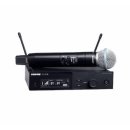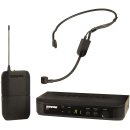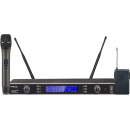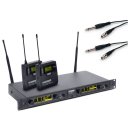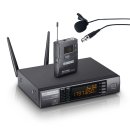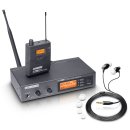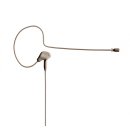The Ultimate Guide to Wireless Microphones for Professional Use
Wireless microphones have revolutionized the way audio is captured and transmitted in various settings, from live performances and presentations to conferences and broadcasting. By eliminating the constraints of cables, wireless microphones provide the flexibility and freedom that wired systems simply cannot. For advanced users, selecting the right wireless microphone is critical to achieving high-quality sound while ensuring reliable, interference-free performance. This guide dives deep into the world of wireless microphones, covering everything from frequency ranges and transmission technologies to accessories and best practices for setting up a wireless microphone system.
Understanding Wireless Microphone Systems: UHF vs. VHF
The backbone of any wireless microphone system is its transmission technology. Most wireless microphones operate on either UHF (Ultra High Frequency) or VHF (Very High Frequency) bands, and each has its advantages. UHF wireless microphones are generally preferred for professional applications due to their superior signal clarity and reduced interference. They typically operate between 470-698 MHz, offering more available channels and less interference from other electronic devices. This makes UHF systems ideal for live performances, large venues, and complex setups where multiple wireless microphones are in use.
In contrast, VHF wireless microphones operate between 30-300 MHz and are often found in more affordable systems. While VHF systems can be adequate for smaller venues or personal use, they are more susceptible to interference, especially in urban environments where radio and television signals may overlap. For users looking for the best wireless microphones for live performances or outdoor events, UHF systems provide the most reliable and professional-grade performance.
Choosing Between Handheld, Lavalier, and Headset Microphones
The next critical decision when selecting a wireless microphone is choosing the right form factor. Handheld wireless microphones are the most common, providing a familiar and versatile tool for singers, speakers, and presenters. These microphones are typically equipped with dynamic capsules, making them robust and capable of handling high sound pressure levels without distortion. Handheld microphones are the best wireless microphones for singers and vocalists, particularly in live settings where durability and high sound quality are essential.
Lavalier wireless microphones, also known as lapel microphones, offer a hands-free solution, making them ideal for presentations, conferences, and broadcast use. Lavalier microphones are small, discreet, and clip onto the speaker’s clothing, allowing for greater freedom of movement. These microphones are particularly useful in corporate settings or during presentations, where a hands-free setup is essential for delivering seamless content.
Headset wireless microphones are another popular option, especially in live theater, fitness instruction, and broadcasting. These microphones are worn around the head and positioned near the speaker’s mouth, providing consistent audio quality even when the user is moving. Headset microphones are ideal for high-energy performances or situations where the speaker is highly mobile, making them a top choice for fitness instructors or stage performers.
Digital vs. Analog Wireless Microphone Systems
The audio quality and reliability of wireless microphones also depend on whether they use digital or analog transmission. Analog wireless microphones have been the industry standard for decades, offering reliable performance and good sound quality. However, analog systems can suffer from interference and signal degradation, especially when multiple microphones are used simultaneously or when operating in a crowded frequency spectrum. Analog wireless microphones often employ companding technology to improve sound quality by compressing the audio signal before transmission and expanding it upon reception.
In contrast, digital wireless microphones provide superior audio quality, largely because they transmit the audio signal in a digital format, free from the noise and interference that can affect analog systems. Digital transmission also allows for encrypted signals, which is especially important in environments where privacy and security are concerns, such as corporate events or government meetings. For professionals seeking the best wireless microphones with digital transmission, options like the Sennheiser EW-D or the Shure QLX-D provide pristine sound quality and advanced features like automatic frequency management.
Key Features to Look for in Wireless Microphones
When choosing a wireless microphone, several technical features can impact performance, usability, and overall sound quality. One of the most important factors is the microphone’s operating range, which determines how far you can be from the receiver without experiencing signal loss or interference. For large venues or outdoor events, selecting wireless microphones with a long transmission range is crucial. Systems like the Shure BLX24R offer up to 300 feet of reliable range, making them ideal for concerts or large conferences.
Battery life is another critical consideration, especially for live performances or events where changing batteries mid-performance is impractical. Many high-end wireless microphones feature rechargeable battery systems that provide extended operation times. For example, the Audio-Technica System 10 offers up to 10 hours of continuous use, ensuring that your microphone will last throughout the performance or event.
Noise reduction and interference management are also key factors. Wireless microphones with automatic frequency selection can scan for the best available frequency and switch to it automatically, ensuring a stable connection even in environments with heavy signal traffic. High-quality wireless microphones often come with noise-cancelling features to eliminate unwanted background noise, delivering clearer sound even in challenging environments like outdoor concerts or bustling conferences.
Setting Up and Optimizing a Wireless Microphone System
Proper setup and optimization are essential to getting the best performance from your wireless microphone system. Start by ensuring that your receiver and transmitter are on the same frequency, and avoid using frequencies that overlap with local TV stations or other wireless systems. Many modern wireless microphones feature automatic frequency synchronization, making it easy to avoid conflicts and interference.
Placement of the receiver is also critical. For the best results, position the receiver in a line of sight with the microphone and at least six feet off the ground. Avoid placing the receiver near large metal objects or electronic equipment that could interfere with the signal. If you’re using multiple wireless microphones in a large venue, consider using a wireless microphone system with multiple channels. Systems like the Sennheiser G4 or the Shure ULX-D allow for simultaneous use of several microphones without frequency interference, making them ideal for concerts, conferences, and other large events.
Finally, for professionals using wireless microphones in live performances or broadcasts, investing in accessories like antenna distribution systems and rack-mountable receivers can greatly improve signal stability and overall system performance. These accessories help manage signal paths and ensure consistent audio quality across multiple microphones, making them essential for large-scale audio setups.
Conclusion: Finding the Best Wireless Microphone for Your Needs
Wireless microphones are an indispensable tool in a wide range of professional and personal applications. Whether you're performing on stage, presenting in a conference room, or producing content for broadcast, choosing the right wireless microphone system is key to ensuring high-quality sound and reliable performance. By understanding the technical aspects of UHF vs. VHF systems, digital vs. analog transmission, and the different microphone types available, advanced users can make informed decisions that meet their specific needs.
For those seeking the best wireless microphones for live performances, singers, or professional audio setups, high-end systems with features like long transmission range, noise cancellation, and digital encryption provide the reliability and clarity needed for demanding environments. And for presenters, conference organizers, or mobile content creators, wireless microphones like lavalier and headset models offer flexibility without sacrificing sound quality. By carefully selecting the right microphone system and optimizing its setup, you can ensure clear, consistent audio performance in any situation.



